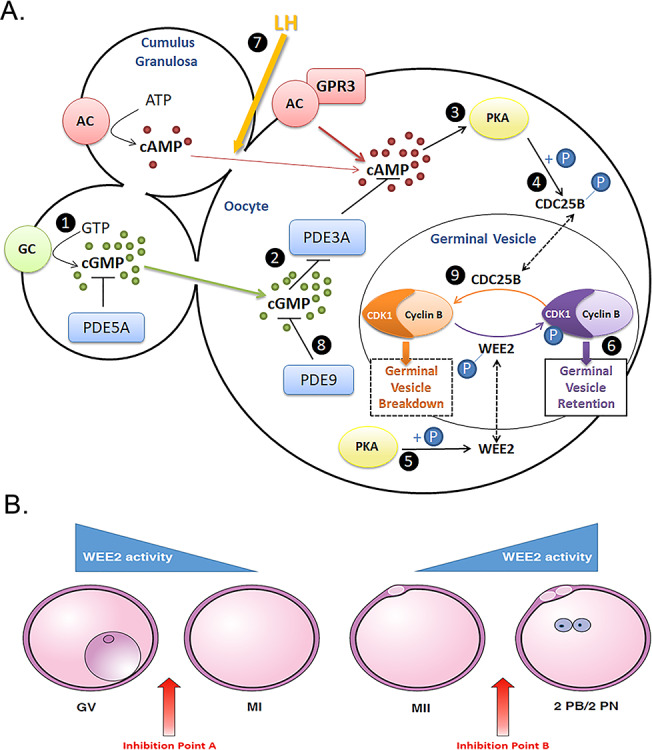Figure 1.

Working hypothesis in developing gamete-based non-hormonal contraceptives that specifically target oocyte meiosis regulation. (A) Cumulus cells surrounding the oocyte synthesize cGMP (1) that diffuses through open gap junctions (GJ) into the oocyte preventing PDE3A (2) from hydrolyzing cAMP. cAMP activates PKA (3), leading to phosphorylation and sequestration of CDC25B to the cytoplasm (4), as well as phosphorylation and translocation of WEE2 kinase to the GV (5). Active WEE2 phosphorylates CDK1, inactivating the CDK1/cyclin B complex (M-phase promoting factor; MPF), and thereby maintaining meiotic arrest (6). Following the LH surge induced gap junction closure (7), PDE9 (8) and PDE3A degrade the cyclic nucleotides necessary for maintaining PKA activity. No longer under suppressive phosphorylation, CDC25B translocates to the GV, where it removes the inhibitory phosphate on CDK1 (9). This leads to MPF activation, GVBD, and resumption of meiosis. (B) Inhibition of WEE2 at point A results in GVBD, resumption of meiosis and no change in fertilization potential. Inhibition at point B results in a failure to exit meiosis, blockade of fertilization, and a contraceptive effect. GV, germinal vesicle; MI, metaphase I; MII, metaphase II; and 2PB/2PN, 2 polar bodies/2 pronuclei.
